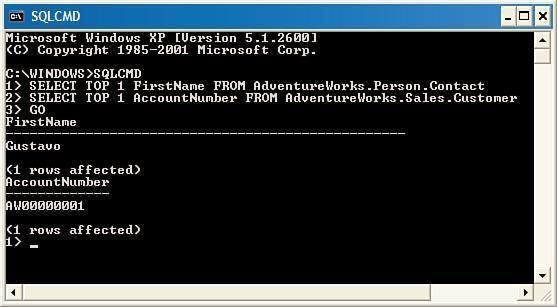

ANSI / Terminal escape codes don’t render or work well.There are a couple of things that may lessen your experience: When you type M-x comint-run and you give it a program to run, it’ll… probably work fine. That’s why, if you ever find yourself in the unfortunate position of having to muck around with commandline tools like stty, that you’ll come to appreciate just how much work Emacs has put into this over the last four decades. īut talking to external processes is fraught with inconsistencies: bad decisions made in the 1980s that linger on today platform discrepancies having to emulate how a teletype or teleprinter device from the late 70s would literally write out characters on paper or screen and the list goes on. It’s also how shell piping works when you do cat myfile.txt |. That’s basically how Emacs works: it taps into those channels and communicates through them.
RUN UXTERM FROM COMMAND LINE WINDOWS
The fallback, and this is true of Windows especially, is to simply redirect the channels – pipes, really – to achieve a broadly similar effect. If you’re on Linux, your Emacs is probably using pseudo-terminals (called a “pty”) to achieve this. They’re usually called standard input, output and error - though not all platforms have a dedicated error channel, and some may have even more channels than those three. When you “run” a program in your terminal, you’re effectively communicating with that program using bidirectional “channels”. That includes native Emacs implementations for features that may not be present on certain platforms, or outright workarounds if certain features don’t work well or at all. The maintainers of Emacs go to great lengths to ensure a uniform experience - where possible, anyway. How Emacs talks to External ProcessesĮmacs runs on many platforms. But first, it’s worth talking about how Emacs interacts with external programs. A shell is something like bash, or cmd.exe, or python.Įmacs can do both. The terminal emulator reads control codes and updates a grid of characters split into columns and rows.

Comint mode also has the unfortunate job of having to work with a baroque set of systems, devices and rules that are old and arcane.īut an important note before I begin: a terminal emulator is not the same as a shell. Shells like M-x shell and M-x run-python inherit from comint mode. comint-mode introduces low-level functions for dealing with interactive shells that require user input, a history ring, and so on. This article is only a quick overview, but it’s enough to get an understanding of Emacs’s capabilities.Īll external, interactive shells in Emacs are derived from something called comint-mode.
RUN UXTERM FROM COMMAND LINE PLUS
If you use Emacs as your shell you will have all the functionality that Emacs provides plus you get almost all of the advantages provided by the shell itself, but built into Emacs. If you come from other editors or IDEs you’re probably using an external terminal window (like xterm), a terminal multiplexer (like GNU Screen or tmux) or console window (in Windows) and switching back and forth. One of Emacs’s strongest selling-points is its shell integration and terminal emulation. To use Emacs effectively, you must learn to use all that Emacs has to offer.


 0 kommentar(er)
0 kommentar(er)
